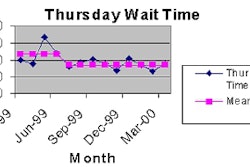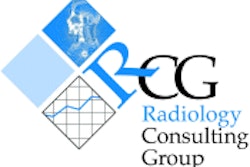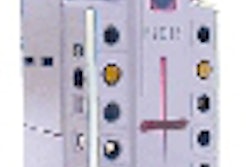A successful sonographer needs a steady hand, a keen eye, an analytical mind, and a compassionate heart.
"Sonography takes good eye-hand coordination. Sonographers are typically moving the transducer on some part of the patient’s body and reading the monitor at the same time. Eye development is a skill that takes time to develop. A resident cannot just come in and do a sonogram, and that is why physicians have such a dependency on sonographers," said Jean Lea Spitz, M.P.H., RDMS, FAIUM, FSDMS, chairman of the radiologic technology department and sonography program director at the University of Oklahoma Health Sciences Center.
Sonography is a diagnostic medical procedure that can be used to examine many parts of the body, such as the abdomen, the female reproductive system, breasts, prostate, heart, and blood vessels. Sonography is increasingly being used in the detection and treatment of heart disease, heart attack, and vascular disease--all of which can lead to strokes. A transducer transmits high frequency sound waves, then records the echoes as they bounce off human tissues. A computer translates the echoes into dynamic visual images of organs, tissues or blood flow inside the body.
Spitz says sonography is her dream career, one that she would have planned for even as a young child if it existed then. She discovered ultrasound like the rest of the medical community when it became more widely used in the early 1970s. "I was very lucky. I was a premed student, and I was working in an OB/GYN ward at a hospital in Jackson, MS, when we got the ultrasound equipment. I was sent to Colorado to train on equipment there for three weeks," she said.
Several years later and 24 years ago, the University of Oklahoma recruited Spitz to teach. She also continues to practice sonography in an OB/GYN clinic and at a tertiary care radiology clinic part time to maintain her skills. She said she has been honored to create programs that help her students excel, because she literally started the program from scratch. "We did not even have textbooks when we started. We had to used medical pathology texts to teach our classes," she said.
The increasing complexity of the process and equipment means that on-the-job training, such as she received, is no longer adequate to prepare students with the tools they need to deliver quality patient care.
"I got into it early and on-the-job training was possible," Spitz said. "But we cannot get students qualified to practice and pass the registry exam with on-the-job training. We have tried." The sonography, medical imaging, and radiation therapy programs at the University of Oklahoma require students to have two years of basic college education before they can be accepted into the two-year specialized program that offers both clinical and classroom studies. Other similar programs exist across the country.
Sonographers are responsible for performing diagnostic procedures and obtaining diagnostic images. They must analyze the technical information and use independent judgment to decide if the scope of the procedure should be expanded based on their diagnostic findings. They then record and report their findings to physicians.
"Sonographers have to be secure. They know their limits," Spitz said. "They have to know what they know and what they do not. And they have to be willing to accept that sometimes they cannot know what is there, but they have to realize that is the technology and not them."
The field offers a wide variety of specialties including abdominal, obstetric-gynecology, echocardiography, pediatric echocardiography, neurosonography, peripheral vascular Doppler, and ophthalmology. Salaries vary across the country, but an average starting salary is about $20 to $22 an hour. Experienced sonographers who specialize can make $60,000-70,000 a year, Spitz said. A recent study showed that 42% of hospitals across the country need sonographers.
By American Society of Radiologic TechnologistsJune 2001



















